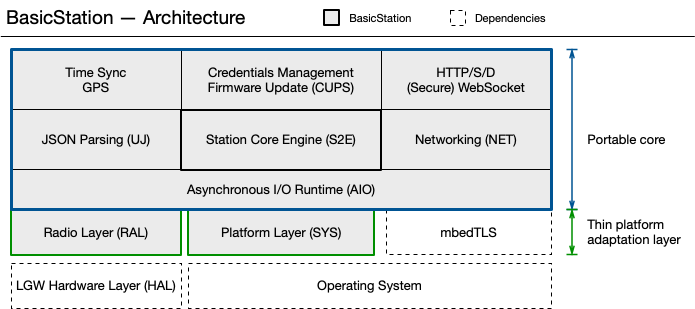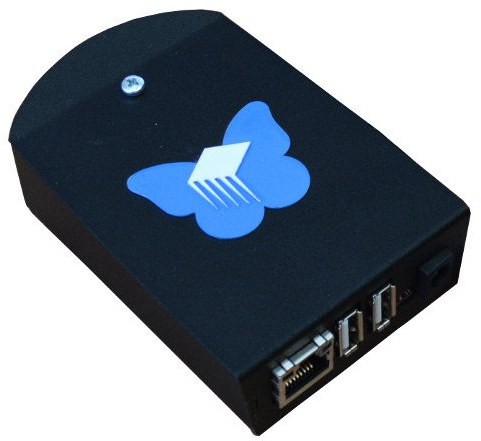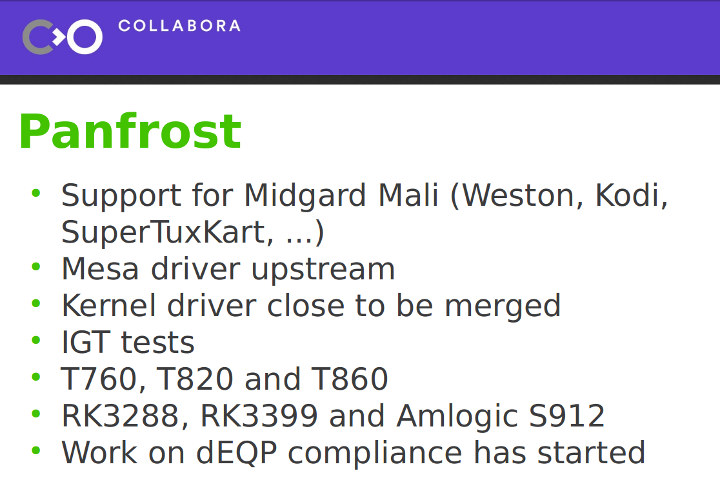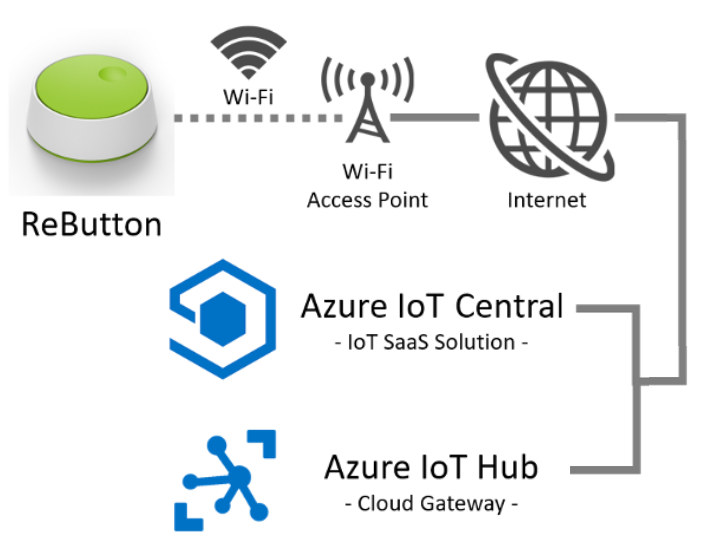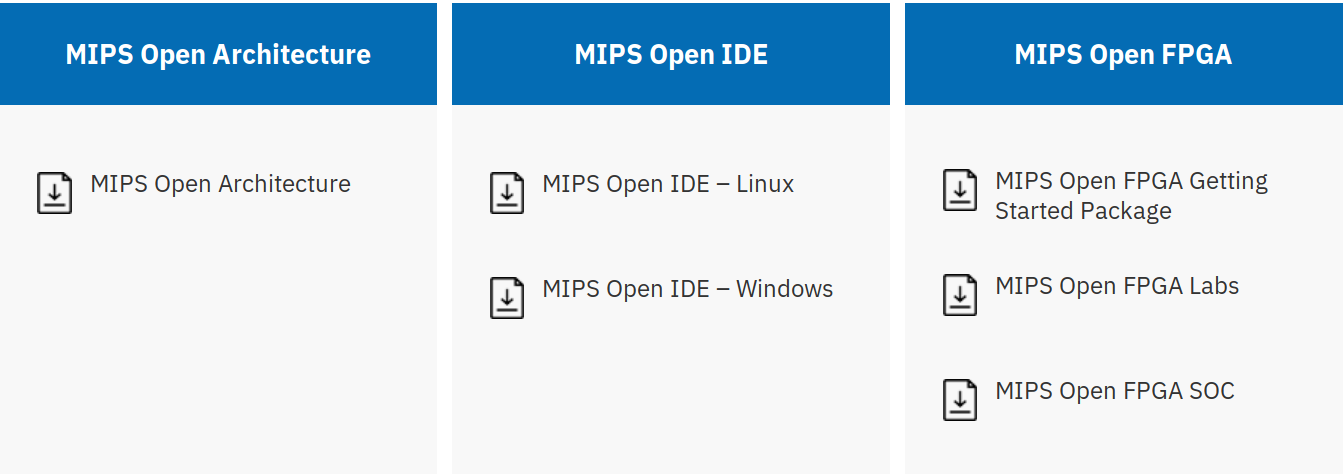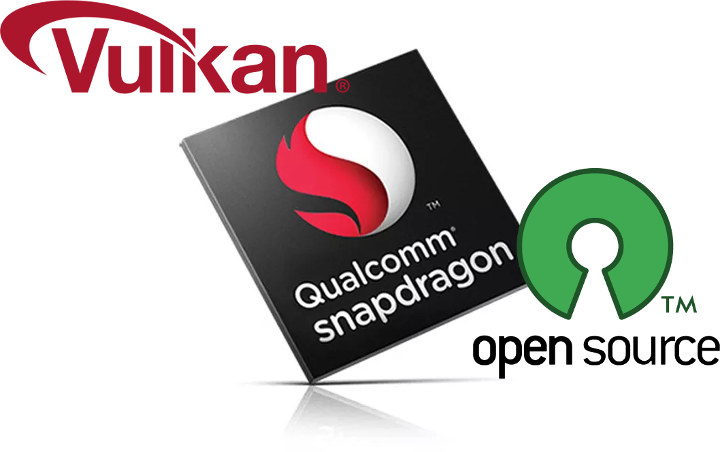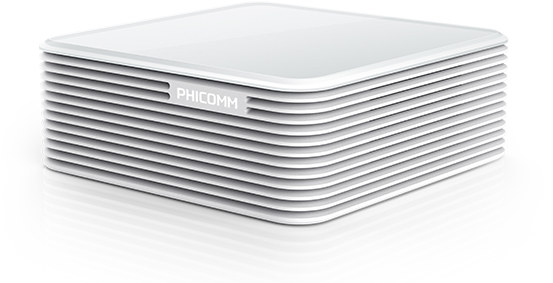Semtech has released open source software for LoRa-based gateways including LoRa Basic Station packet forwarder for Linux-based gateways, LoRa Basic MAC implementation of the LoRa Alliance’s LoRaWAN specification, and LoRa Basic loader bootloader capable of handling firmware updates. All three components are available for free under a revised 3-Clause BSD license. LoRa Basic Station supports LoRaWAN Classes A, B, and C, presents a unified radio abstraction layer supporting Concentrator Reference Designs v1.5 and v2, and implements various backend protocols. Apart from mbedTLS and libloragw/-v2, it does not rely on external dependencies, the code is written in C language only, and easily portable to Linux gateways and embedded systems. LoRa Basic MAC is a fork of IBM’s LMiC library, also implemented in C language, supports multiple regions selectable at compile and/or run time, and can handle Class A, Class B, and Class C devices. Basic MAC uses LoRa Basic loader to […]
Pioneer Edition FreedomBox Home Server Launched with Olimex A20-OLinuXino-LIME2 Board
Olimex works on open source hardware boards, while the FreedomBox Foundation has been developing FreedomBox, a free and open source private server system, since 2010 with the goal of empowering regular people to host their own internet services, like a VPN, a personal website, file sharing, encrypted messengers, a VoIP server, a metasearch engine, and more. When you mix open source hardware, open source software, and a bit of Internet freedom it gives birth to a product called “Pioneer Edition FreedomBox Home Server” based on Olimex A20-OLinuXino-LIME2 board and running FreedomBox software. Pioneer Edition FreedomBox Home Server specifications: SoC – Allwinner A20 dual-core ARM Cortex-A7 CPU @ 1.0 GHz with dual-core Mali 400 GPU System Memory – 1GB DDR3 Storage – microSD slot fitted with 32GB class 10 card loaded with FreedomBox, SATA data and power connectors, 2KB EEPROM for MAC address and custom data Connectivity – Gigabit Ethernet Video […]
Panfrost is an Open Source Driver for Arm Mali Midgard GPUs
Getting GPU drivers to work on Linux with Arm SoCs was really a struggle a few years ago due to close-sources binary blobs that required all bugs to be fixed by a single team. But in recent years we’ve seen good progress with open source mobile GPU drivers including Freedreno for Adreno GPUs, and Etnaviv for Vivante GPUs. Arm Mali also got its own open source Lima driver worked on for many years but only for older Utgard GPUs (Mali 400, Mali 450). However, during the Opensource GPU Drivers BoF at Linaro Connect Bangkok 2019, Rob Herring, Technical Architect at Linaro and Tomeu Vizoso, Principal Software Engineer at Collabora, discuss the status of drivers, and I learned about an open source driver for Mali Midgard (Mali-T6xx, Mali-T7xx) GPU called Panfrost. As we’ll see below, the driver is already capable of running basic demos, has been upstreamed to Mesa, and tested […]
ReButton WiFi Button Features MXCHIP EMW3166 Module
We’ve previously covered WiFi buttons based on ESP8266 processor, but Seeed Studio has just launched ReButton “developer device” that serves the same purpose but features STM32 based MXCHIP EMW3166 WiFi module instead, exposes one I2C grove connector, and is preloaded with sample firmware that triggers Azure IoT Central or Azure IoT Hub. ReButton hardware specifications: MCU module – MXCHIP EMW3166 module including STM32F412 Arm Cortex M4F MCU @ 100 MHz with 256KB SRAM, 1MB+2MB SPI Flash, and Cypress BCM43362 WiFi chip Input – 1x Push button Output – 1x RGB LED Extension – 1x I2C Grove connector (3.3V I/O) Debugging – 1x SWD pads, 1x UART for debugging Misc – 1x Jumper switch Power supply 2x AAA Alkaline batteries (LR03) Internal supply voltage – 3.3V Dimensions – 70 x 70 x 25mm The ReButton comes preloaded with an Arduino sketch that handle key presses and send a trigger to Azure […]
Wave Computing Announces the First MIPS Open Source Release
In a surprise announcement last year, Wave Computing revealed their plans to open source MIPS architecture, and more specifically the new MIPS Release 6 architecture. The company has now started to deliver the goods with the release of the first MIPS Open Program components. Specific components of the first release include: MIPS ISA – The latest R6 version of the MIPS 32-and-64-bit architecture, including extensions such as virtualization, multi-threading, SIMD, DSP and microMIPS code compression MIPS Open Tools – Integrated development environment for embedded real-time operating systems and Linux-based systems for embedded products that enable developers to build, debug and deploy applications on MIPS-based hardware and software platforms; MIPS Open Field Programmable Gate Arrays (FPGAs)– A complete training program for community members that includes: Getting Started Package – Provides the MIPS FPGA system as a set of Verilog files, plus an overview and instructions on how to use the MIPS […]
Turnip is an Open Source Vulkan Driver for Adreno GPU
Qualcomm Adreno GPUs have one of the best open source GPU driver for Arm SoC thanks to Freedreno driver. The driver relies on OpenGL ES API however, and nearly four of years ago, Khronos introduced the Vulkan API that aims to reduce CPU resources usage, and adds support multiple command buffers. The good news is there has been development of a Vulkan driver for Adreno 500 and 600 series GPU called Turnip, also referred to as Freedreno_vk (Freedreno Vulkan) in the code. The Turnip driver has been developed by Bas Nieuwenhuizen, a Site Reliability Engineer at Google who also happens to be RADV (Radeon Vulkan) lead developer, Chia-I Wu, a Google software engineer working on Android graphics, Chad Versace, Intel’s software engineer working on Linux OpenGL stack, and others as revealed by a recent merge into Mesa 19.1 slated to be released next quarter. Via Phoronix Jean-Luc Aufranc (CNXSoft)Jean-Luc started […]
FOSSASIA 2019 Schedule – March 14-17
As its name implies, FOSSASIA is a Free and Open Source Software event taking place every year in Asia, more specifically in Singapore. I first discovered it last year, and published a virtual FOSSASIA 2018 schedule last year to give an idea about the subjects discussed at the event. It turns out FOSSASIA 2019 is coming really soon, as in tomorrow, so I’m a bit late, but I’ll still had a look at the schedule and made my own for the 4-day event. Thursday – March 14, 2019 10:05 – 10:25 – For Your Eyes Only: Betrusted & the Case for Trusted I/O by Bunnie Huang, CTO Chibitronics Security vulnerabilities are almost a fact of life. This is why system vendors are increasingly relying on physically separate chips to handle sensitive data. Unfortunately, private keys are not the same as your private matters. Exploits on your local device still have […]
Phicomm N1 Android 7.1 TV Box Supports Multiple Linux Distributions
I like to look at new hardware platforms supported by Linux mainline, and recently covered MapleBoard MP130 SBC which I found in Linux 5.0 changelog. Today, I had a look at another device. Phicomm N1 is an Amlogic S905D powered TV box running Android 7.1 with a user interface geared towards to the Chinese market. Nothing that interesting so far, but a topic on Armbian forums made it more interesting as the box comes with a larger heatsink than most other cheap TV boxes, a 12V/2A power supply which should allow you to connect several USB hard drives, and potentially more importantly, it became popular among Chinese users, with the community releasing several Linux based distributions for the device including CoreELEC, LibreELEC, Alpine Linux, CentOS, Debian, Deepin, ArchLinux Arm, and more. Phicomm N1 hardware specifications: SoC – Amlogic S905D quad core Arm Cortex-A53 processor @ 1.5 GHz with Arm Mali-450 […]


